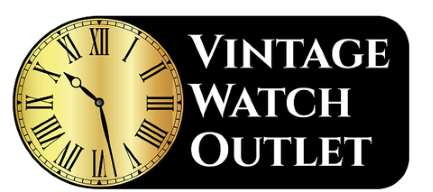May 25 2020
If you ask a watch enthusiast about what they know about the Rolex brand, more often than not, they’ll mention the watchmaker’s famous automatic movements. After all, the “Oyster Perpetual” label given to most of Rolex’s models refers to a) the waterproof Oyster case and b) the perpetual (automatic) movement. However, the Swiss watchmaking giant was not immune to the so-called “Quartz Crisis” of the sixties, seventies and eighties. In fact, Rolex most definitely jumped on the technology bandwagon. Let’s get a closer look at the vintage Oysterquartz Datejust 17013 and discuss why Rolex produced a handful of quartz watches.
Why Did Rolex Make Quartz Watches?
While today many watch enthusiasts look at quartz watches with disdain, in the 1960s this technology was heralded as a significant innovation in the industry. In fact, 20 top Swiss watchmakers, including the likes of Patek Philippe, Omega, and Rolex, joined forces to establish Centre Electronique Horloger (CEH) consortium with the objective to create a Swiss quartz movement they could all use. The result was the Beta-21 quartz movement introduced in 1969.
To house the new movement, Rolex produced the ref. 5100. However, it wasn’t long before Rolex decided that they could produce an even better quartz caliber in-house and the company abandoned the CEH in 1972. After five years of intense research and development, Rolex finally unveiled a pair of manufacture quartz calibers: Caliber 5035 for the Oysterquartz Datejust and the Caliber 5055 for the Oysterquartz Day-Date. While the Oysterquartz Day-Date watches were available in yellow and white gold, the Oysterquartz Datejust collection offers a choice of full stainless steel, stainless steel with a white gold bezel, and two-tone yellow gold and stainless steel.
Two-Tone Oysterquartz Datejust 17013
Like all Oysterquartz Datejust watches, the ref. 17013 features a distinct angular case and an integrated bracelet. We’ve seen this familiar shape before, as it was the must-have silhouette of the 1970s, first introduced by Audemars Piguet with their groundbreaking Gerald Genta-designed Royal Oak sports watch.
Unlike the other Oysterquartz Datejust watches, however, the Rolex ref. 17013 includes 18k yellow gold details. First, there’s the fluted yellow gold bezel on top of the 36mm case along with the yellow gold winding crown. This is followed by two yellow gold links threading through the Jubilee-style integrated steel bracelet. It’s worth mentioning that while on paper the Oysterquartz Datejust case measures 36mm, it wears larger thanks to its angular design. All this comes together for a great retro Rolex watch that is oh-so seventies glam.
One of the first things you’ll notice if you wear a Rolex Oysterquartz is the sound of it ticking—particularly compared to its mechanical movement powered siblings. This is of course because of the quartz caliber working away within the case. Plus, you’ll also see that the seconds hand jumps to its next position—a telltale sign of a quartz watch—rather than sweep around the dial. Since this is a Datejust watch, there’s the signature date window at 3 o’clock magnified by the Cyclops lens attached to the exterior of the sapphire crystal.
A Rolex Datejust Like No Other
If you want to sport a Rolex watch that is remarkably different than the rest of the brand’s catalog, then the Oysterquartz is a solid choice. Onlookers will be curious about its unique design and unusual quartz caliber and will no doubt ask plenty of questions.
Remember, less than 25,000 Oysterquartz watches in total were ever produced over its 25-year manufacturing run, which in the Rolex scheme of things is a very low production count. Boasting uncommon design, mechanics, and numbers, the Oysterquartz Datejust 17013 is one unique Rolex watch that deserves another look.
